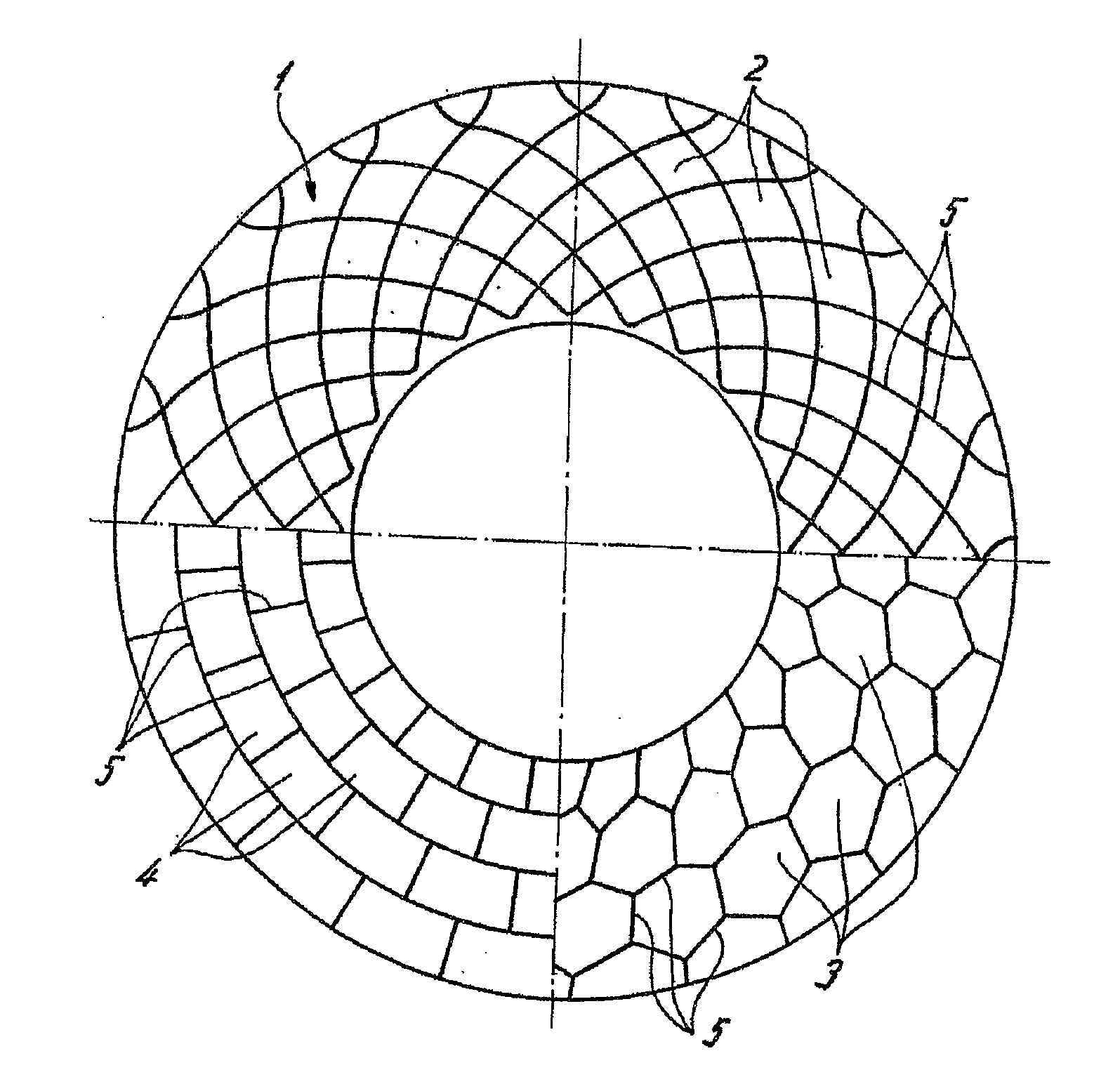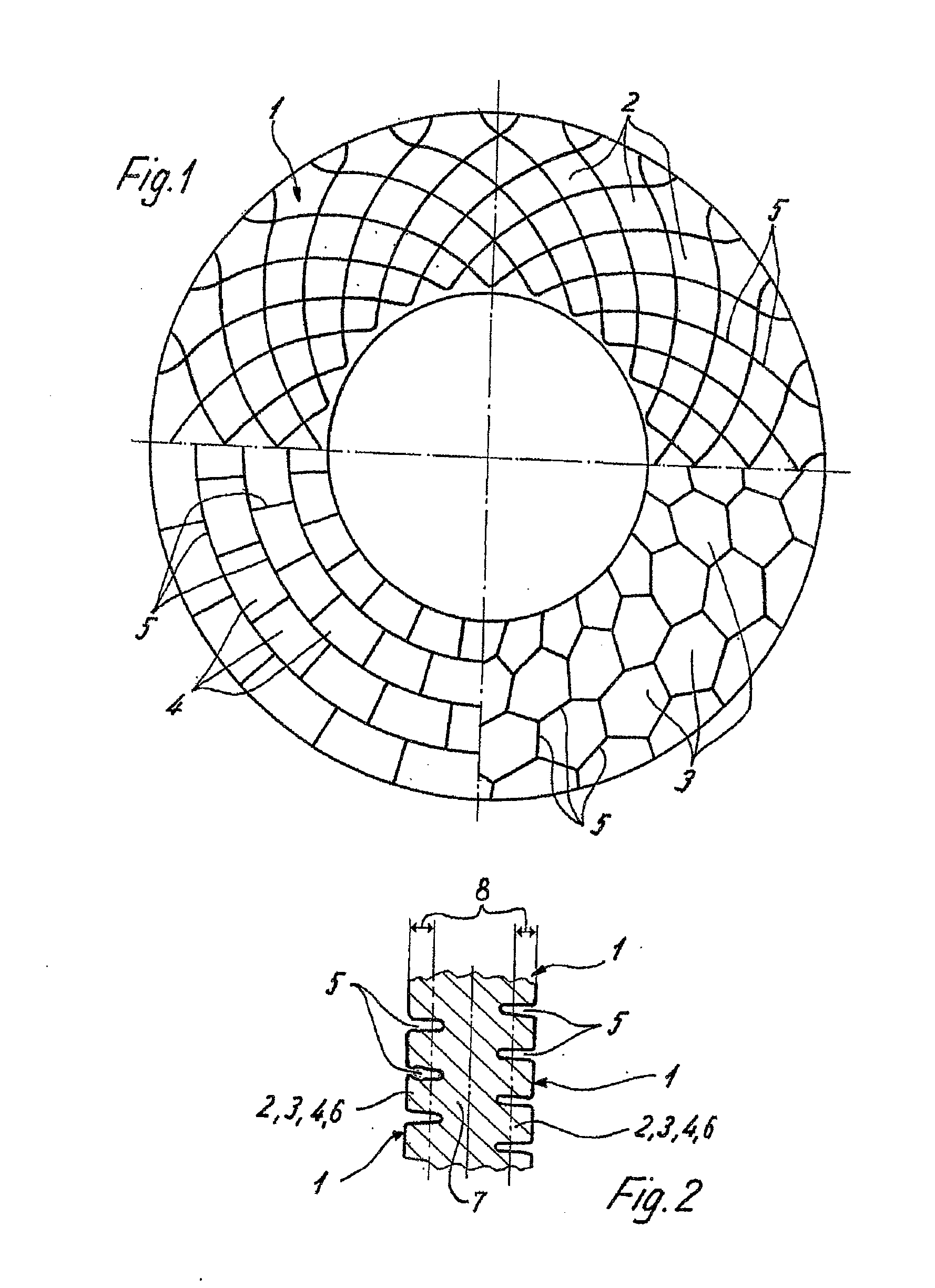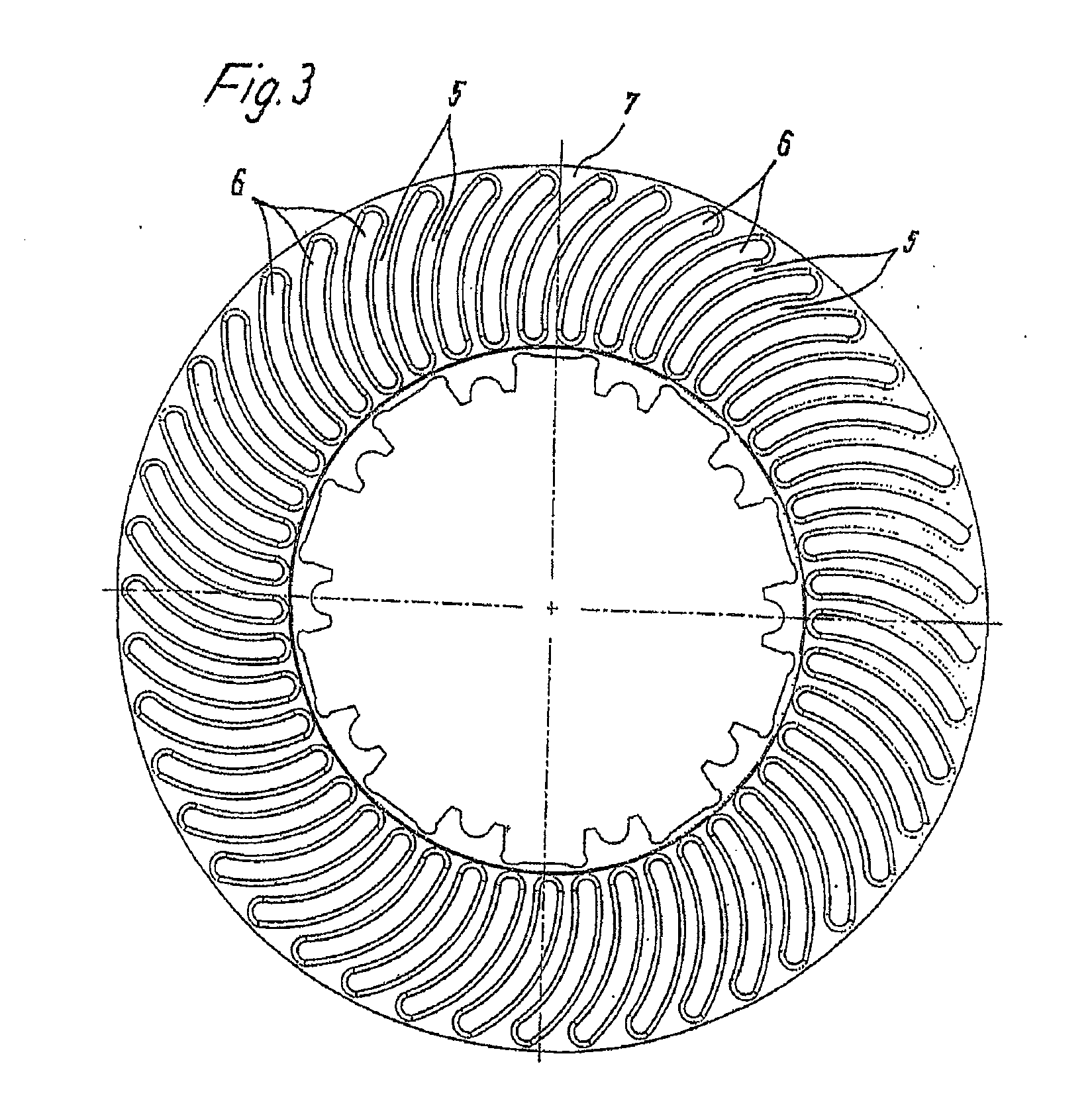Brake Disk, In Particlular for a Vehicle
a technology for brake disks and vehicles, applied in brake types, mechanical equipment, manufacturing tools, etc., can solve the problems of brake disk wear, brake disk wear, and brake disks are subjected to particularly high loads, so as to reduce the subsegment width, reduce and increase the wear of brake disks
- Summary
- Abstract
- Description
- Claims
- Application Information
AI Technical Summary
Benefits of technology
Problems solved by technology
Method used
Image
Examples
Embodiment Construction
[0035] In FIGS. 1, 3, 4, and 5, brake disks for vehicles are respectively represented. Each disk has, on its sides, annular friction surfaces 1 (FIG. 2), against which, for braking, a brake pad (not represented) can be pressed.
[0036] In the present illustrative embodiments, the two friction surfaces 1 are joined together by a continuous brake disk core 7, so that the brake disk is in one piece. In principle, the possibility also exists of providing the brake disk with two thermally separated friction surfaces 1, in which case the internally ventilated brake disk is provided with cooling ducts between the two friction surfaces 1.
[0037] The friction surface 1 has a multiplicity of at least partially physically separated subsegments 2, 3, 4, and 5, which, as illustrated by FIGS. 1, 3, 4, and 5, can differ in terms of contouring.
[0038] The upper half of the brake disk shown in FIG. 1 shows subsegments 2, which have, in the broadest sense, a rhombic contour and are respectively separa...
PUM
| Property | Measurement | Unit |
|---|---|---|
| Diameter | aaaaa | aaaaa |
| Size | aaaaa | aaaaa |
| Width | aaaaa | aaaaa |
Abstract
Description
Claims
Application Information
 Login to View More
Login to View More - R&D
- Intellectual Property
- Life Sciences
- Materials
- Tech Scout
- Unparalleled Data Quality
- Higher Quality Content
- 60% Fewer Hallucinations
Browse by: Latest US Patents, China's latest patents, Technical Efficacy Thesaurus, Application Domain, Technology Topic, Popular Technical Reports.
© 2025 PatSnap. All rights reserved.Legal|Privacy policy|Modern Slavery Act Transparency Statement|Sitemap|About US| Contact US: help@patsnap.com



